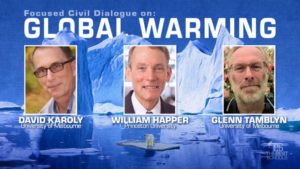
Klimaatsceptici hebben zich er vele jaren over beklaagd dat mainstream klimatologen weigerden met hen in debat te gaan. Die stelden zich – ten onrechte – op het standpunt: ‘The science is settled. All scientists agree.‘ Verdere discussie was dus overbodig.
Het klimaatkritische Heartland Instituut heeft enkele jaren geleden Al Gore uitgenodigd om te spreken op een van zijn jaarlijkse klimaatconferenties en had hem daarvoor zijn – toentertijd … het zal nu wel lager zijn – gebruikelijke honorarium van $ 100.000 geboden. Maar Al Gore weigerde. Dat was achteraf gezien ook wel verstandig van hem, want hij zou zijn geroosterd tijdens de discussie.
Toch lijkt er langzamerhand een kentering te komen in die halsstarrige houding, c.q. wetenschappelijke arrogantie van de mainstream klimatologen. Eerder berichtte ik al over de discussie tussen Judith Curry, John Christy, Roger Pielke Jr. en Michael Mann (bekend van de hockeystick–grafiek) in een hoorzitting van het Amerikaanse congres. Zie hier.
Zoiets lijkt mij in ons land ondenkbaar. Het partijkartel en een deel van de oppositie zijn hier stevig in de greep van de klimaathysterie. Twijfel aan de menselijke broeikashypothese is voor hen vloeken in de kerk. En de politiek weet het allemaal zeker. Die verschrikkelijke opwarming (die maar niet wil komen) dient uit alle macht te worden bestreden. Dat welke Nederlandse inspanning op dit gebied dan ook, geen enkel aantoonbaar effect zal hebben op de gemiddelde wereldtemperatuur, is niet belangrijk. Nederland dient gidsland te zijn en een voortrekkersrol te spelen! Aan nationale zelfoverschatting geen gebrek.
De CO2-uitstoot van Nederland daalt weliswaar niet, zoals het CBS weer onlangs berichtte, maar we zijn apetrots dat we maar mooi weer een nieuwe internationale organisatie – er waren er nog niet genoeg en de initiatiefnemers hebben kennelijk nog nooit van de wet van de afnemende en negatieve meeropbrengsten gehoord – binnen hebben gehaald, o.l.v. Ban Ki-moon en Bill Gates, die zal worden gehuisvest in een drijvend kantoor in de haven van Rotterdam!
Waarom in godsnaam een drijvend kantoor? Ja, zeggen de pleitbezorgers van dit initiatief, waaronder de hooggeleerde Pier Vellinga (Wageningen), dat is belangrijk vanwege de symbolische waarde daarvan! Net als Alice waant men zich in Wonderland’.
Maar Nederland loopt een beetje achter. In meer ontwikkelde landen dan Nederland, met minder van de overheid afhankelijke wetenschappers dan bij ons, komt de klimaatdiscussie wèl van de grond.
Onlangs publiceerde Anthony Watts op zijn blog een uitstekende, beschaafde, zeer informatieve en voor een breed publiek toegankelijke discussie tussen een klimaatalarmist, David Karoly (Universiteit van Melbourne), en de klimaatscepticus, William Happer (Princeton), waaraan in een later stadium ook Glenn Tamblyn (eveneens Universiteit van Melbourne) aanschoof. De weergave van deze discussie werd geredigeerd door Andy May.
Het zal vele lezers bekend zijn dat de klimaatsceptici, in tegenstelling tot de mainstream, geen consensuscultuur kennen. Toch geloof ik dat de meesten van hen zich wel in de opvattingen van William Happer zullen herkennen. Dus ja, toch iets van een klimaatsceptische consensus!
Deze discussie besloeg 3 ‘postings’, deel A t/m C (hier, hier en hier).
De discussie was gericht op de beantwoording van de volgende vragen:
- Is de recente opwarming van de aarde ongebruikelijk?
- Hoe weten we dat de toename van CO2 en andere broeikasgassen in de atmosfeer het grootste deel van de recente opwarming hebben veroorzaakt?
- Hoe weten we dat de toename van de CO2–uitstoot en andere broeikasgassen het resultaat is van menselijke activiteit?
- Klimaatmodellen worden gebruikt om het aandeel van de opwarming veroorzaakt door de mens te bepalen. Hoe nauwkeurig zijn deze?
- Hoe weten we of wereldwijde opwarming en meer CO2 een substantieel schadelijk effect zullen hebben op de mensheid en de planeet?
- Moeten we iets doen om de wereldwijde opwarming te bestrijden?
Ik pik er een aantal elementen uit.
Ad vraag 1: Is de recente opwarming van de aarde ongebruikelijk?
Karoly:
There are a number of estimates of the hemispheric average temperature using different methods and different proxy data, not just the one shown … by Michael Mann and his collaborators. They all show that the period around 1000 AD was relatively warm and that the period around 1600 to 1800 was relatively cool, just as the Hockey Stick does. However, they all show that the increase in Northern Hemisphere average temperature over the twentieth century was larger than in any other century over the last millennium and that the last 30 years was likely warmer than any other 30-year period over the last 1000 years averaged over the whole Northern Hemisphere.Happer:
The hockey-stick temperature record was conspicuously absent from the latest IPCC report, which speaks volumes. My guess is that the hockey stick started out as an honest but mistaken paper, but one welcomed by the global-warming establishment. They had been embarrassed for years by the Medieval Warm Period, when Vikings farmed Greenland, and when emissions from fossil fuels were negligible. A.W. Montford’s book, The Hockey Stick Illusion (Anglosphere Books, 2015), is a pretty good summary of what happened.
Ad Vraag 2: Hoe weten we dat de toename van CO2 en andere broeikasgassen in de atmosfeer het grootste deel van de recente opwarming hebben veroorzaakt?
Karoly:
Science has established that it is virtually certain that increases of atmospheric CO2 due to burning of fossil fuels will cause climate change that will have substantial adverse impacts on humanity and on natural systems. Therefore, immediate, stringent measures to suppress the burning of fossil fuels are both justified and necessary.Happer:
There is no scientific basis for the claim that increases of atmospheric CO2 due to burning of fossil fuels will cause climate change that will have substantial adverse impacts on humanity and on natural systems. If fossil fuels are burnt responsibly to limit real pollutants like fly ash, oxides of nitrogen or sulfur, heavy metals, etc., the CO2 released will be a benefit to the world. Any resulting climate change will be moderate, and there will be very major benefits to agriculture and other plant life.
Ad vraag 3: Hoe weten we dat de toename van de CO2–uitstoot en andere broeikasgassen het resultaat is van menselijke activiteit?
Karoly:
The increase in atmospheric carbon dioxide over the past 40 years agrees very well with the increase expected from emissions associated with burning fossil fuels, land clearing, and industrial activity, less the additional uptake of carbon dioxide into the oceans and the land ecosystems due to the higher concentrations.Happer:
…. agrees that the observed increase in CO2 concentration in the atmosphere is due to human activity: burning fossil fuels and other industrial activity.Karoly:
Nevertheless, an overwhelming consensus of climate scientists agree that human-caused climate change is happening, and that global warming will continue throughout the current century, with many adverse impacts on human and natural systems.Happer:
Truth has never been determined by “an overwhelming consensus,” and in fact, consensuses have often been completely wrong.
Over hoe computermodellen worden gebruikt om natuurlijke opwarming van antropogene (door de mens veroorzaakte) opwarming te onderscheiden.
Karoly:
… climate model simulations have been used to assess the relative importance of different forcing factors on the climate system and how well they explain the observed global warming. The simulations are driven by natural forcing factors, such as changes in solar radiation and volcanic aerosols, as well as human-caused changes in greenhouse gases and human activity-related climate forcing factors, including industrial aerosols and land use change.
De volgende grafiek toont het verloop van het CO2–niveau over de afgelopen 550 miljoen jaar.
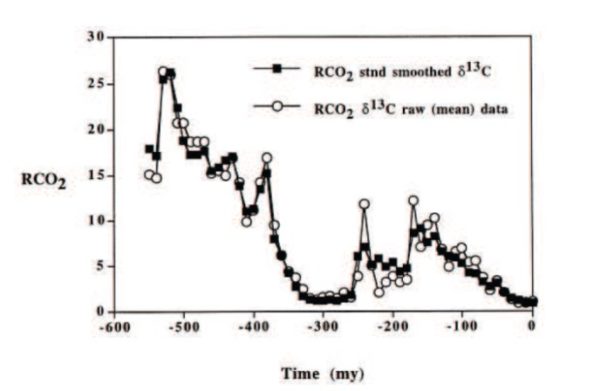
Happer over deze grafiek:
The important message of this Fig. is that CO2 concentrations have been much higher than present values over most of the history of life. Even though CO2 concentrations were measured in thousands of parts per million by volume (ppm) over most of the Phanerozoic, not the few hundred ppm of today, life flourished in the oceans and on the land. Average pH values in the ocean surface were as low as pH = 7.7, a bit lower than the pH = 8.1 today. But this was still far from acidic, pH < 7, because of the enormous natural alkalinity of seawater. The mean global temperature was sometimes higher and sometimes lower than today’s. But the temperature did not correlate very well with CO2 levels. For example, there were ice ages in the Ordovician, some 450 million years ago, when the CO2 levels were several thousand ppm. …
Ad vraag 4. Klimaatmodellen worden gebruikt om het aandeel van de opwarming veroorzaakt door de mens te bepalen. Hoe nauwkeurig zijn deze?
Karoly:
The observed significant cooling for one to two years after major volcanic eruptions —Santa Maria (1903), Agung (1963), El Chicon (1982), and Pinatubo (1991) —is simulated very well. The observed global mean temperature variations throughout the whole period lie within the range of all the model simulations with combined forcings, indicating the models simulate well the chaotic interannual variability of global mean temperature. There is very good agreement between the observed long-term global warming since the late nineteenth century and the average global warming across all the model simulations for combined natural and anthropogenic forcing. …Of course, a small number of scientists say that the climate models are tuned to simulate the recent observed warming but are unreliable for projecting future warming trends. Others say that they show too much global warming, because the observed warming from 1998 to 2010 was very small, while the simulated warming continued, if you consider the average across all the climate model simulations. As shown already when considering the observed global mean temperature variations, there is large natural variability in global mean temperature in the observations and the models. The observed departure in 2010 from the multi-model mean is no larger than in 1910 or in 1940 and is well within the envelope of all the model simulations.
Happer over de stelling dat de klimaatmodellen zouden bewijzen dat de opwarming sinds 1951 voornamelijk aan menselijke activiteiten zou zijn toe te schrijven.
I disagree. This statement is based on excessive faith in computer models. The wide availability of computers and powerful software to make color displays has been a serious problem, since it has blurred the lines between reality and virtual reality. These are not the same. In my Statement and Interview I tried to stick to real satellite pictures of visible and thermal radiation from the Earth, real measurements of ocean pH, real records of tornados, hurricanes, floods, droughts, etc. Essentially all of Dr. Karoly’s claims of warming from greenhouse gases come from computer models, with lurid, threatening reds to represent the supposedly harmful effects of the demon gas, CO2.
Ad vraag 5: Hoe weten we of wereldwijde opwarming en meer CO2 een substantieel schadelijk effect zullen hebben op de mensheid en de planeet?
Karoly:
Global warming has led to increases in hot extremes and heatwaves, affecting human health and leading to crop and animal losses, as well as increases in the occurrence and intensity of wild fires in some regions.Increases in global temperature have led to global sea level rise, flooding coastal areas and causing coastal erosion and pollution of coastal freshwater systems with seawater. The impacts of storm surges, combined with global and regional sea level rise, were clearly demonstrated by the storm surge impacts of Hurricane Sandy on New York City and the east coast of the United States. Expected sea level rise by the end of this century for even the smallest projected global warming will lead to the annual flooding of many hundreds of millions of people and the complete loss of some low-lying island countries.
One of the other major impacts of climate change due to increasing carbon dioxide concentrations is the increase in carbon dioxide dissolved in the oceans. As shown below, the dissolved carbon dioxide in the upper waters of the ocean has increased in parallel with the increase in atmospheric concentration. As the oceans absorb more carbon dioxide, they become less basic (or more acidic), with a higher concentration of carbonic acid. This can be seen in the decrease in pH of ocean water by about 0.1 units over the last 30 years.
Karoly erkent dat er mogelijke postitieve effecten zijn van opwarming, maar dat geldt slechts voor het geval dat deze beperkt blijft. Dus de mate van opwarming is belangrijk.
Karoly:
The increase in carbon dioxide concentrations in the atmosphere has some potential benefits for plants because carbon dioxide is essential for photosynthesis. Plants grown in an atmosphere with higher carbon dioxide have faster growth rates and lower water use, assuming there are no other limits on growth.
Happer:
If increasing CO2 causes very large warming, harm can indeed be done. But most studies suggest that warmings of up to 2 K will be good for the planet [ (Tol 2009)] extending growing seasons, cutting winter heating bills, etc.
More CO2 in the atmosphere will be good for life on planet Earth. Few realize that the world has been in a CO2famine for millions of years — a long time for us, but a passing moment in geological history. Over the past 550 million years since the Cambrian, when abundant fossils first appeared in the sedimentary record, CO2 levels have averaged many thousands of parts per million (ppm), not today’s few hundred ppm, which is not that far above the minimum level, around 150 ppm, when many plants die of CO2 starvation [(Dippery, et al. 1995)]. An example of how plants respond to low and high levels of CO2 is shown in Fig. [7] from the review by Gerhart and Ward.” (Gerhart and Ward 2010)
Tamblyn:
Temperature — specifically leaf temperature — is a critical factor in photosynthesis and crop yields. Photosynthesis is temperature-dependent: the productivity of photosynthesis is poor at low temperatures, rising to a peak around 30° C for C3 photosynthesizers, slightly higher for C4 plants. Beyond this peak, photosynthesis efficiency declines markedly, dropping to very low by around 40° C.
Happer:
I believe that more CO2 is good for the world, that the world has been in a CO2 famine for many tens of millions of years and that one or two thousand ppm would be ideal for the biosphere. I am baffled at hysterical attempts to drive CO2 levels below 350 ppm, or some other value, apparently chosen by Kabbalah numerology, not science.
Over most of the geological history of the Earth, CO2 levels have been much higher than now. There were no tipping points: ocean acidification was not a problem; corals flourished, leaving extensive fossil reefs for us to study today; and evolution continued its steady course on land and in the oceans, punctuated by real catastrophes, including giant meteor strikes, massive volcanic eruptions leading to vast areas of flood basalts, etc. These events probably released CO2, CH4, SO2, and other gases that significantly affected the oceans and atmosphere, but the catastrophes were not directly caused by greenhouse gases. … The only undisputed effect of more atmospheric CO2 over the past century has been a pronounced greening of the earth …
One of the bogeymen is that more CO2 will lead to, and already has led to, more extreme weather, including tornadoes, hurricanes, droughts, floods, blizzards, or snowless winters. But … the world has continued to produce extreme events at the same rate it always has, both long before and after there was much increase of CO2 in the atmosphere. In short, extreme weather is not increasing. [Original reference (Pielke Jr. 2017)]
We also hear that more CO2 will cause rising sea levels to flood coastal cities, large parts of Florida, tropical island paradises, etc. The facts, from the IPCC’s Fifth Annual Report (2013), are shown in Fig. 19 [not reproduced here]. A representative sea level rise of about 2 mm/year would give about 20 cm or 8 in of sea level rise over a century. For comparison, at Coney Island, Brooklyn, NY, the sea level at high tide is typically 4 feet higher than that at low tide …
In biologically productive areas, photosynthesizing organisms remove so much CO2 during the day that the pH can increase by 0.2 to 0.3 units, with similar decreases at night when respiring organisms return CO2 to the water.
Ad vraag 6: Moeten we iets doen om de wereldwijde opwarming te bestrijden?
Karoly:
The net emissions (sources minus sinks) of greenhouse gases into the atmosphere from human activity need to fall from present levels to near zero as quickly as possible.
Happer wijst erop dat klimatologen wel meer dan 50 mechanismen hebben gesuggereerd ter verklaring van de afwijkingen tussen de modeluitkomsten en de realiteit, zoals hieronder aangegeven.
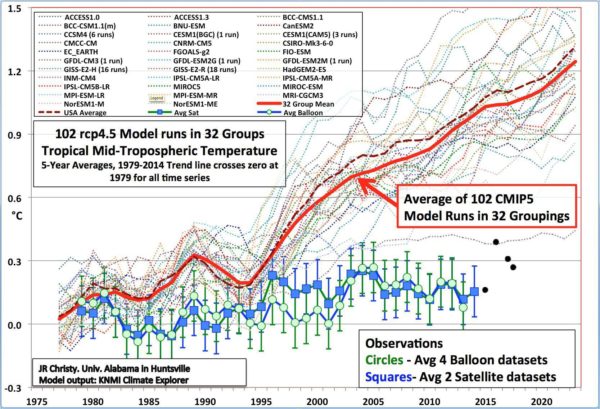
Happer:
The simplest interpretation of the discrepancy of [this graph] is that the net feedback is small and possibly even negative. … Is concerted governmental action at the global level desirable? No. More CO2 will be good for the world, not bad. Concerted government action may take place anyway, as has so often happened in the sad history of human folly. … It is immoral to deprive most of mankind of the benefits of affordable, reliable energy from fossil fuels on the basis of computer models that do not work.
In de oorspronkelijke ‘postings’ (zie voor de links in de inleiding) geeft redacteur Andy May een uitvoerige toelichting op de uitspraken van Happer, Karoly en Tamblyn, met uitgebreide literatuurverwijzingen.
Aanbevolen leesvoer dus voor klimatofielen van alle gezindten!

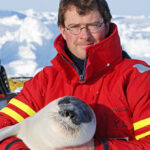


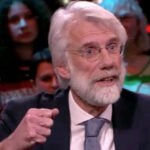

“There is no scientific basis for the claim that increases of atmospheric CO2 due to burning of fossil fuels will cause climate change that will have substantial adverse impacts on humanity and on natural systems. If fossil fuels are burnt responsibly to limit real pollutants like fly ash, oxides of nitrogen or sulfur, heavy metals, etc., the CO2 released will be a benefit to the world. Any resulting climate change will be moderate, and there will be very major benefits to agriculture and other plant life.”
Ik wacht op de wetenschappelijke onderbouwing van deze informatie! Waar kan ik de publicatie van William Happer vinden waar ik deze conclusie uit kan trekken!
(antwoord afwezig, hij kan die conclusie niet wetenschappelijk onderbouwen en het is dus wetenschappelijk waardeloos en een sprookje)
“The hockey-stick temperature record was conspicuously absent from the latest IPCC report, which speaks volumes. ”
Inderdaad het IPCC vat de relevante wetenschap van de afgelopen 6-7 jaar samen, dus geen onderzoek van 20 jaar geleden wat al lang vervangen is voor nieuwere inzichten (wat niets af doet aan het werk van Mann van 20 jaar geleden), dat Happer dit niet begrijpt is inderdaad wel een duidelijk teken aan de wand.
“The important message of this Fig. is that CO2 concentrations have been much higher than present values over most of the history of life. ”
Inderdaad en vroeger toen CO2 nivo’s veel hoger waren was de zon veel minder actief, dus de “sceptici” negeren de belangrijke rol van de zon in het verhaal.
” A representative sea level rise of about 2 mm/year would give about 20 cm or 8 in of sea level rise over a century.”
Inderdaad maar de geobserveerde versnelling zorgt er voor dat we nu al op 3mm zitten en er natuurlijk een versnelling is waar te nemen
En daarna komt het lang weerlegde grafiekje van Chritsy.
Het is maar goed dat het bij debatten met “sceptici” niet gaat om de feiten
Grappig. Je vraagt om bewijs voor de stelling dat ergens geen bewijs voor is.
Grappig
Jeroen heeft nog steeds niet begrepen dat wetenschap biet waar is omdat een wetenschapper die nog nooit 1 letter over klimaat wetenschap heeft gepubliceerd dat zegt
En het maakt niet uit of deze wetenschapper nu wel of geen Nobelprijs heeft
Even uitgaande dat je met ‘biet’ het woord niet bedoelde, dan zeg je dat ‘wetenschap’ wel of niet waar kan zijn. Daar leg je al een vrij onnavolgbaar criterium aan.
Laat ik dan -gemakshalve en om de nodige duidelijkheid aan te brengen- verder gaan met het interpreteren van jouw zin en aannemen dat iet ‘wetenschappelijk’ kennelijk wel of niet waar kan zijn.
Als de argumentatie van een wetenschapper slechts mag worden aangenomen op grond van het feit dat hij reeds een wetenschappelijke publicatie op zijn naam heeft staan, dan volgt daaruit dat geen enkele wetenschapper een eerste wetenschappelijke publicatie kan doen, simpel vanwege het feit dat hij op dat moment nog geen eerdere wetenschappelijke publicatie op zijn naam heeft staan en dat daarom zijn eerste wetenschappelijke publicatie niet als wetenschappelijk kan worden beschouwd.
Op grond daarvan kan hij dus nooit een eerste wetenschappelijke publicatie doen, hetgeen ertoe leidt dat op grond van jouw argumentatie geen enkele wetenschapper ooit een eerste publicatie heeft gedaan of kan hebben gedaan. Je mag dan prat gaan op je beta-achtergrond, je toepassing van logica in deze laat toch wat te wensen over.
Dus, gefeliciteerd! Je hebt zojuist dogmatiek in de plaats van wetenschap gesteld!
Jeroen,
jij vergeet het woordje zegt, dat is natuurlijk niet verwonderlijk want je leeft van het verdraaien wat mensen zeggen. Dus zeggen heeft geen toegevoegde waarde, publiceren in een wetenschappelijke publicatie is geen zeggen maar schrijven (lastig he)
En inderdaad tot het moment dat iemand wat publiceert neem ik zijn mening verder met een grammetje zout. Als hij het beter denkt te weten (en het is een gerespecteerd wetenschapper wat Happer natuurlijk gewoon is) vraag ik me af…. Waarom publiceert hij zijn onderbouwde opinie niet even in een wetenschappelijk tijdschrift en kunnen zijn collega wetenschappers met hem in een fatsoenlijke wetenschappelijke discussie in plaats van naar wat opinie praatjes te luisteren.
Dus Happer (maar bijvoorbeeld ook Kroonenberg en natuurlijk ook Crockford) zijn uitstekend gekwalificeerd om wat te vinden en mogen daar vrolijk over babbelen maar ik wacht op een wetenschappelijke publicatie voordat ik ze serieus neem.
Hier klopt iets niet Hans, de vraag over CO2 wordt beantwoord met temperatuur.
Ad Vraag 2: Hoe weten we dat de toename van de CO2–uitstoot en andere broeikasgassen het resultaat is van menselijke activiteit?
Karoly:
There are a number of estimates of the hemispheric average temperature using different methods and different proxy data, not just the one shown … by Michael Mann and his collaborators. They all show that the period around 1000 AD was relatively warm and that the period around 1600 to 1800 was relatively cool, just as the Hockey Stick does. However, they all show that the increase in Northern Hemisphere average temperature over the twentieth century was larger than in any other century over the last millennium and that the last 30 years was likely warmer than any other 30-year period over the last 1000 years averaged over the whole Northern Hemisphere.
Happer:
The hockey-stick temperature record was conspicuously absent from the latest IPCC report, which speaks volumes. My guess is that the hockey stick started out as an honest but mistaken paper, but one welcomed by the global-warming establishment. They had been embarrassed for years by the Medieval Warm Period, when Vikings farmed Greenland, and when emissions from fossil fuels were negligible. A.W. Montford’s book, The Hockey Stick Illusion (Anglosphere Books, 2015), is a pretty good summary of what happened.
Dank Hans!
Ha ha Karoly geeft geen antwoord op de vraag
Ad Vraag 2: Hoe weten we dat de toename van de CO2–uitstoot en andere broeikasgassen het resultaat is van menselijke activiteit?
Karoly:
Science has established that it is virtually certain that increases of atmospheric CO2 due to burning of fossil fuels will cause climate change that will have substantial adverse impacts on humanity and on natural systems. Therefore, immediate, stringent measures to suppress the burning of fossil fuels are both justified and necessary.
Happer:
There is no scientific basis for the claim that increases of atmospheric CO2 due to burning of fossil fuels will cause climate change that will have substantial adverse impacts on humanity and on natural systems. If fossil fuels are burnt responsibly to limit real pollutants like fly ash, oxides of nitrogen or sulfur, heavy metals, etc., the CO2 released will be a benefit to the world. Any resulting climate change will be moderate, and there will be very major benefits to agriculture and other plant life.
Volgens mij zijn de antwoorden van vraag twee en drie verwisseld.
Dit is namelijk het antwoord op vraag 2.
Karoly:
The increase in atmospheric carbon dioxide over the past 40 years agrees very well with the increase expected from emissions associated with burning fossil fuels, land clearing, and industrial activity, less the additional uptake of carbon dioxide into the oceans and the land ecosystems due to the higher concentrations.
Happer:
…. agrees that the observed increase in CO2 concentration in the atmosphere is due to human activity: burning fossil fuels and other industrial activity.
Hans L: kijk nog eens kritisch naar de opmaak van je blogpost, hij klopt zo niet.
Dank Hans!
Ik had kennelijk mijn dag niet.
De grote winst is misschien niet een snelle en complete omslag in denken maar wel dat her en der de ingebeelde opwarming ter discussie komt te staan.
In de oceanen bevindt zich 98% van de CO2.
In de atmosfeer 2%
Stel dat de hoeveelheid CO2 in de atmosfeer met 100% zou toenemen,
met hoeveel % neemt de totale hoeveelheid CO2 dan toe?
Trek zelf je conclusie!
Waar gaat dit debat over?
Gaat het over klimaat of gaat het om hele andere verborgen agenda’s?
Waldorp, jouw 2% CO2 in de atmosfeer is pertinent fout / veel te hoog. CO2 is slechts 400 ppm in de atmosfeer. Reken zelf maar uit hoe klein het juiste % is.
Scheffer, ik dènk toch dat je Marjan Waldorp wat verkeerd begrepen hebt (overkomt iedereen weleens), maar volgens mij bedoelt ze alleen maar te zeggen dat 2% van alle CO2 in de atmosfeer zit en de rest in de oceaan. Dat die 2% dan overeenkomt met 400ppm is een ander verhaal.
Uit interesse heb ik het maar ff opgezocht. The oceans contain about 50 times more CO2 than the atmosphere and 19 times more than the land biosphere.
De denkfout die Scheffer maakt is dat die 400 ppm over de gehele luchtkolom geldt. 0,04% CO2 is om de 2500 m een laag van 1m dik met alleen maar CO2. Over de gehele luchtkolom, rekening houdende met afnemende luchtdruk zou dat heel grofweg betekenen dat er 10m 100% CO2 bij standaard luchtdruk en temperatuur (STP) in de atmosfeer zit.
De kolom 100% CO2 aan de grond is iets dunner.
Deze berekening: luchtdruk * molair volume * CO2 volume fractie / (molecuulgewicht van lucht * versnelling van de zwaartekracht) resulteert in 3.15 meter.
Gebruikte waarden: 10^5 Pascal, 22.4 liter/mol, 400 ppmv, 29 Dalton, 9.8 m/s2.
Dank voor de berekening. Ik ben blijkbaar ergens de mist in gegaan bij mijn aannames.
OK, terechte kanttekingen, hieronder. 2 verschillende grootheden, allebei correct.
Nog maar eens uitgerekend hoe het zit. Met ernstige excuses voor de zeer foute bron, maar het orgineel van de NASA is even onvindbaar, en deze site komt altijd als eerste in google klimaat searches, hoe bevooroordeeld kan je zijn, maar goed:
https://static.skepticalscience.com/images/carbon_cycle_NASA.jpg
Oceaan CO2: Deep Ocean 38100 GtC (Surface Ocean 1020 GTC)
Atmosphere 750 GtC
750/38100 = 1,9685%
Ergo Marjan’s 2% is gewoon correct.
wat is er fout aan die bron?
Het is een foutenbron?
Ik vind Karoly erg slechte argumentatie hebben. Happer staat er duidelijk boven en komt met zeer goed onderbouwde argumenten. Karoly kakelt de consensus na zonder enige onderbouwing. Ik noem dat fake-news van een wetenschap die zich nog in een embryonaal stadium bevindt. Happen laat dat wel keuirig weten en baseert zich op het verleden en heden. Het verleden is heel belangrijk, zoals Tony Heller elke dag laat zien. Nu met Florence en eerdere soortgelijke orkanen: https://realclimatescience.com/2018/09/washington-post-donald-complicit-with-florence/ .
Heller geeft helemaal gen onderbouwing, bevestigd natuurlijk wel het geloof van Anton Bakker, net als de sprookjes verteller Tony Heller
Inderdaad beide verkopen fake news
En nee AGW bevind zich niet in een embryonaal stadium, het 100 keer herhalen maakt iets nog niet waar
Via de digitale historische kranten van delpher.nl is de draaierij van de NL-pers, de NL-politiek en de NL-politici heel goed te volgen.
Kijk naar de instelling van b.v. Trouw, van verzetskrant “vrij onverveerd” tot spreekbuis van alarmisten “vrij afgeserveerd”.
Delpher.nl is een prima tool om wat historisch besef bij te brengen.
Wat is er mis met het bericht in de Washington Post?
https://realclimatescience.com/wp-content/uploads/2018/09/2018-09-11213330_shadow.png
Naar verwachting komt Florence noordelijker aan land dan Hazel in 1954.
Volgens
https://edition.cnn.com/interactive/storm-tracker/?utm_source=embed
lijkt ze af te nemen naar cat.2 (154-177 km/h) in plaats van de eerder gevreesde cat 5 (252 km/h or higher).
Bevat veel water en zal voor aanzienlijk afkoeling (daar) zorgen.
Tja, zo te lezen laat de Washington Post geen kans ongebruikt om het iedereen wereldwijd in te peperen.
Guido
Ik ben ook wat verbaast over wat de mitigatie heeft bewerkstelligd om onder het RCP8.5 uit te komen. Volgens de gegevens over de CO2-uitstoot zitten we nog steeds perfekt op de lijn van het RCP85. Ik zie ook niet hoe we daar komende jaren onder gaan komen. Met de toenemende inzet van biomassa zal de uitstoot van CO2 toenemen en gezien de groei van ekonomien als Maleisie, China, India en Brazilie is ook geen daling te verwachten. Dus we gaan in 2100 mooi op die 1000ppm uitkomen en een temperatuurstijging van 3 tot 5°C. Oke, met een overschatting van de klimaatgevoeligheid van CO2 zal dat dan 2 tot 4°C worden. Een andere conclusie kun je toch niet trekken?
Interessante discussie, Hans!
Happer meest overtuigend, Karoly is vooral klimaatalarmist (ondersteund Mann’s gemanipuleerde hockeystick) maar toont (heel soms) ook redelijkheid voor (C-)AGW-kritiek en de positieve effecten van hogere CO2-waarden voor de groei van de vergroening.
Heyden is wederom niet interessant en verder gewoon te negeren.
Wat hier bechreven wordt, dat is geen “deabt”, maar enkel stemmingmakerij. Het is zo éénzijdig dat enkel iemand die blind overtuigd is en niet kritisch kan nadenken, dat niet ziet.
Is Karoly een “klimaatalarmist”? Hij vertegenwoordigt gewoon de zeer brede conclusie van de klimaatwetenschap, dus hij is eigenlijk een “klimaatrealist”. Met suggesteif woordgebruik kun je altijd wel de stemming op je had krijgen.
Is het een debat? Nee. Karoly kan de feiten presenteren. Daarna komt de “scpeticus” daarop kritiek geven. Maar daarna volgt er geen commentaar van Karoly. Hij kan de leugens, de misinterpretaties en verdraaiingen er niet uithalen. Daardoor blijft het beeld hangen dat die “scepticus” gelijk zou hebben. Moeten de realisten hier weerom al die leugens en dergelijke eruit halen? Waarop baseert Happer zich bijvoorbeeld om te beweren dat “more CO2 will be good for the world”? Zo’n leugen gaat er bij de AGW-negationisten in als zoete koek, maar ze beseffen niet dat het gewoon uit de duim gezogen propaganda is!
@ Marjan,Guido,
Het weinige CO2 in de oceanen is in evenwichten met bicarbonaat en carbonaat. De CO2 kan vrij uitwisselen met de atmosfeer, de carbonaat kan neerslaan met bv Ca of en eventueel later kan weer krijt oplossen en CO2 vormen.
Het bicarbonaat is in de praktijk bijna onbeperkt oplosbaar in water,zorgt voor pH-buffering.
Alles wordt door evenwichtconstanten geregeld, temperatuur is de grote aanjager van dit geheel.
We kunnen beter spreken over DIC,zijnde opgelost anorganisch koolstof. Dus in feite is alle anorganisch koolstof in de oceanen betrokken bij dit spel. Het organisch koolstof (DOC) moet eerst afgebroken worden, het kan dan als CO2 meedoen.
Het leuke is dat het allemaal goed uit te rekenen is,de chemische sommetjes kloppen ook nog!
Bewezen in een groot aantal KOI-vijvers.
Hans L, eerste versie reactie
@ Marjan,Guido,
Het weinige CO2 in de oceanen is in evenwichten met bicarbonaat en carbonaat. De CO2 kan vrij uitwisselen met de atmosfeer, de carbonaat kan neerslaan met bv Ca of en eventueel later kan weer krijt oplossen en CO2 vormen.
Het bicarbonaat is in de praktijk bijna onbeperkt oplosbaar in water,zorgt voor pH-buffering.
Alles wordt door evenwichtconstanten geregeld, temperatuur is de grote aanjager van dit geheel.
We kunnen beter spreken over DIC,zijnde opgelost anorganisch koolstof. Dus in feite is alle anorganisch koolstof in de oceanen betrokken bij dit spel. Het organisch koolstof (DOC) moet eerst afgebroken worden, het kan dan als CO2 meedoen.
Het leuke is dat het allemaal goed uit te rekenen is,de chemische sommetjes kloppen ook nog!
Bewezen in een groot aantal KOI-vijvers.
Jan Pel
Weinig is natuurlijk een relatief begrip. Ten opzichte waarvan? Vergeleken met de koolstof gebonden in sedimenten is het in CO2 gebonden koolstof in de oceanen weinig. Ten opzichte van het koolstof gebonden in CO2 in de atmosfeer is het veel. Uiteindelijk gaat het erom wat het bewerkstelligt en daarover raken ze hier niet uitgepraat. Maar… het blijft een boeiend systeem dat klimaat. Maar iets minder afkatten en meer verhelderen zou de site wel goed doen denk ik.
Maar leg dat van het anorganisch en het organisch koolstof even uit. Organisch koolstof in het bodemslib van je Koivijvers o.a. door excrementen van de vissen?
André
Kun je even toelichten wat er precies fout is aan die bron. Een aantal mensen hier proberen me stelselmatig naar Google te jagen. Dan krijg ik dus zo maar foute gegevens. De gegevens zijn in dat plaatje niet helemaal recent, maar het zal er toch niet zo ver naast zitten?
Peter, het plaatje is min of meer wel geloofwaardig, maar de site waarnaar ik gemakshalve heb gelinkt (omdat google die steevast als eerste neerzet), is Bagger met een hoofdletter. Hoofdkwartier van de meest extreme klimaatterroristen.
https://wattsupwiththat.com/2012/09/30/skeptical-science-shouting-and-joe-romms-integrity-a-test/
Durf na te denken. Durf ook dit te lezen: https://skepticalscience.com/Anthony_Watts_blog.htm
Lees ook zeker de links. die daar worden getoond.
En natuurlijk dit Andre
https://blog.hotwhopper.com/2013/08/and-then-they-attack-you.html
Voor de mensen die vallen over het woord “denier” is het gebruik van de afkorting “SS” wel ok.
Ja ja
Oh en het downloaden van een prive deel van een website natuurlijk ook prima, net als het hacken van een email server absoluut geen probleem is,
Ik snap dat jullie vallen over het woord terrorist.
Maar wat is een terrorist? Dat zou volgens deze juffrouw hier iemand kunnen zijn die angst als wapen gebruikt. https://www.volkskrant.nl/nieuws-achtergrond/hoe-zag-de-eerste-terrorist-op-nederlandse-bodem-eruit-~ba5041b8/
En het is duidelijk dat deze site alle bewijzen dat klimaatangst onzinnig is, te vuur en te zwaard bestrijdt. Ergo het gebruikt angst (terror) als wapen. Terror-isten
“Wat is het belangrijkste wapen van een terrorist? Een bom? Een geweer? Nee: het belangrijkste wapen is angst.”
En het is duidelijk dat climategate.nl alle bewijzen dat de energietransitie betaalbaal is, te vuur en te zwaard bestrijdt en dit doet door angst te verspreiden over de klimaatwetenschap en de kosten van de energie transitie
Terroristen dus !
Waar het over gaat dat je zo makkelijk en zonder enige onderbouwing mensen zwart maakt.
@Peter van Beurden:
“Kun je even toelichten wat er precies fout is aan die bron.”
Begin maar met alle bronnen te wantrouwen; er is altijd wel een bron te vinden om de meest onzinnige stelling te onderbouwen.
Een “onschuldig” voorbeeld:
knmi.nl/nederland-nu/weer/waarschuwingen-en-verwachtingen/weer-en-klimaatpluim
Plaats de muis op een rode cirkel van de max. temperatuur en je krijgt er gratis een profetie bij:
“Rond 2050 zal dat maximum 1 à 3.5 C hoger zijn.”
En Boels,
dat is fout want?
Of voldoet het niet aan de verwachtingen van Boels en is het dus fout?
Maar inderdaad je moet goed kijken naar je bronnen, het grote voordeel van SkS dat er altijd verwezen wordt naar de onderliggende wetenschappelijke publicatie, en als je een punt hebt dat er wetenschappelijk onderzoek is dat de andere kant op wijst ze dat ook vermelden, ze hebben natuurlijk geen behoefte aan verzinseltjes zonder wetenschappelijke onderbouwing (en dat is natuurlijk lastig voor de “sceptici”)
SkS artikelen zijn dus controleerbaar, je zou kunnen zeggen ze stellen zich kwetsbaar op
“Rond 2050 zal dat maximum 1 à 3.5 C hoger zijn.”
Als het KNMI een wetenschappelijk instituut is dan is “zal” niet wetenschappelijk.
Als men “zal” vervangt door “kan” is het dat ook niet zonder profetische gaven.
Jij blijft maar hameren op de wetenschappelijkheid van wetenschappers.
Mocht je het niet weten, het zijn ook maar mensen en kunnen de al dan niet aangetoonde intelligentie ook aanwenden tot leugen en bedrog.
Integriteit en intelligentie kunnen heel ver van elkaar af liggen.
Je verschuilen achter “wetenschappelijke publicaties” zonder zelf zin en onzin te kunnen en willen onderscheiden is bloedlink.
André Bijkerk
Weer gerustgesteld. De menselijke bijdrage zal inmiddels wat hoger zijn. Maar als het gemiddeld langzamerhand warmer wordt moet er toch meer CO2 uit de oceanen vrijkomen en minder oplossen zou ik denken. Waarom wordt dan primair naar de mens gewezen. Dat menselijke activiteiten CO2 in de lucht brengen lijkt me duidelijk. Overigens lijkt me in dat geval alleen de bijdrage uit fossiel relevant en wat daaraan gelieerd is en daarnaast de boskap.Al het overige lijkt me niet relevant.
Aan CO2 is een politieke agenda gekoppeld: die van de fossiele brandstoffen.
Die fossiele brandstoffen zijn -in elk geval op dit moment- essentieel
voor het functioneren van onze industriele maatschappij.
CO2 is een machtig wapen.
Zonder CO2 kun je nog geen theelepeltje produceren.
Dus wie aan de CO2-knoppen draait heeft de macht in handen!
Die kan de maatschappij maken en breken.
Als je aan iedere burger eenzelfde CO2-budget toekent, heb je via
de achterdeur het communisme ingevoerd.
Vergis je niet!
– Auto’s zijn al CO2 beprijst
Ja, ja, die oh zo belangrijke CO2 uitstoot
– Gloeilampen zijn verboden
Onzinne maatregel.
Gloeilampen gaven een confortable stralingswarmte in de winter.
Urgenda promoot het plaatsen van infrarood stralers in de woning.
Nee maar! Dat zijn gloeilampen, die niet eens licht geven!
– Stofzuigers zijn gemaximeerd op 900W.
Nog maar gauw een stofzuiger gekocht die zuigt.
– We moeten minder vlees gaan eten.
Minder CO2 uitstoot.
– Er liggen vergaande plannen om de verkoop van fossiele auto’s
volledig te gaan verbieden
Met de huidige stand van de techniek is het echter onmogelijk
alle 600 miljoen auto’s op deze wereld te electificeren.
Uitgaande van kleine middenklasse auto’s, model Golf, zijn met
ca. 70 miljoen electrische auto’s de wereldvoorraden lithium en
kobalt uitgeput.
Bron:
https://wattsupwiththat.com/2017/10/31/wall-street-loves-electric-cars-america-loves-trucks-tesla-news-cobalt-cliffs-lithium-landslides-and-real-disruptive-innovation/
Ongekende bureaucratische terreur!
Allemaal uit naam van CO2-beleid.
@Marjan Waldorp:
“– Stofzuigers zijn gemaximeerd op 900W”
Dat vind ik een stupide politieke beslissing.
Geeft ook aan dat de betrokken politici geen poot verzetten in het huishouden.
Het slaat als “hernieuwbaar” op een varken.
Het gaat om de op te wekken onderdruk (zuigkracht); als men daar een norm voor wil stellen (onderdruk per watt) dan is dat prima.
Andre,
Omdat iemand een foute humor heeft heeft hij dus ongelijk als het gaat over de feiten van het klimaat debat.
Dat is dus typisch een DH1 argument
kunnen we afspreken dat we de onenigheid tenminste op niveau houden. Kijk even hier: paulgraham.com/disagree.html climategate.nl/2015/07/thermodynamische-dwalingen/
Klimaatsceptici hebben zich er vele jaren over beklaagd dat mainstream klimatologen weigerden met hen in debat te gaan. NATUURLIJK NIET WANT DIE LINKSFSACISTISCHE BETWETERS VANGEN DE MILJOENEN.
Jean Lemmers,
het probleem is dat er niemand is om in debat mee te gaan, “sceptici” zijn namelijk nooit klimaatwetenschappers en hebben dus geen relevante wetenschappelijke publicaties op hun naam staan, een debat is dan ook een nutteloze manier van voortgang in de wetenschap, iemand die verbaal sterker is heeft niet automatisch gelijk, gelijk heb je als je standpunt kunt onderbouwen en dat onderbouwen gebeurt als je wat kunt documenteren en anderen het kunnen repliceren, en dat gebeurt nu net in de wetenschappelijke literatuur en dat gaat nu eenmaal niet in een debat van een uurtje.
“LINKSFSACISTISCHE BETWETERS” laat weer zien dat jouw probleem ideologisch is en niets te maken heeft met wetenschappelijke scepsis
”sceptici” zijn namelijk nooit klimaatwetenschappers en hebben dus geen relevante wetenschappelijke publicaties op hun naam staan,
Richard Lindzen
Roy Spencer
Judith Curry
Sherwood Idso
Patrick Michaels
Roger Pielke
Fred Singer
Zo even uit mijn blote hoofd….
En uit het blote hoofd hebben singelen Idso en michals nog nooit 1 wetenschappelijke letter op papier gezet als het gaat over klimaatwetenschap
Maar ik had inderdaad bijna moeten zeggen
Idso, Craig D.; Idso, Sherwood B.; Balling, Robert C., Jr. (1998). “The Urban CO2 Dome of Phoenix, Arizona”. Physical Geography. 19 (2): 95–108.
Stooksbury, David E.; Idso, Craig D.; Hubbard, Kenneth G. (1999). “The Effects of Data Gaps on the Calculated Monthly Mean Maximum and Minimum Temperatures in the Continental United States: A Spatial and Temporal Study”. Journal of Climate. 12 (5): 1524–1533. doi:10.1175/1520-0442(1999)0122.0.CO;2.
Idso, Craig D.; Idso, Sherwood B.; Kimball, Bruce A.; Park, Hyoung-Shin; Hoober, J. Kenneth; Balling Jr., Robert C. (2000). “Ultra-enhanced spring branch growth in CO2-enriched trees: can it alter the phase of the atmosphere’s seasonal CO2 cycle?”. Environmental and Experimental Botany. 43 (2): 91–100. doi:10.1016/S0098-8472(99)00054-4.
Idso, Craig D.; Idso, Sherwood B.; Balling, Robert C., Jr. (2001). “An intensive two-week study of an urban CO2 dome in Phoenix, Arizona, USA”. Atmospheric Environment. 35 (6): 995–1000. doi:10.1016/S1352-2310(00)00412-X.
Idso, Craig D. (2001). “Earth’s rising atmospheric CO2 concentration: Impacts on the biosphere”. Energy & Environment. 12 (4): 287–310. doi:10.1260/0958305011500797. Archived from the original on 2013-01-29.
Michaels, P.J.; Singer, S.F.; Knappenberger, P.C.; Kerr, J.B.; McElroy, C.T. (1994). “Analyzing ultraviolet-B radiation—is there a trend?”. Science. 264 (5163): 1341–1343. Bibcode:1994Sci…264.1341M. doi:10.1126/science.264.5163.1341. PMID 17780851.
Michaels, Patrick J.; Knappenberger, Paul C. (1996). “Human effect on global climate?”. Nature. 384 (6609): 522–523. Bibcode:1996Natur.384..522M. doi:10.1038/384522b0.
Michaels, Patrick J.; Balling Jr., Robert C.; Knappenberger, Paul C.; Knappenberger, PC (1998). “Analysis of trends in the variability of daily and monthly historical temperature measurements” (PDF). Climate Research. 10: 27–33. doi:10.3354/cr010027. ISSN 0936-577X.
“Revised 21st century temperature projections”, Patrick J. Michaels, Paul C. Knappenberger, Oliver W. Frauenfeld and Robert E. Davis, Climate Research, Vol. 23: 1–9, 2002.
Davis, Robert E.; Knappenberger, Paul C.; Novicoff, Wendy M.; Michaels, Patrick J. (2002). “Decadal changes in heat-related human mortality in the eastern United States” (PDF). Climate Research. 22: 175–184. Bibcode:2002ClRes..22..175D. doi:10.3354/cr022175. ISSN 0936-577X.
Davies, R.E.; Knappenberger, P.C.; Michaels, P.J.; Novicoff, W.M. (2003). “Changing heat-related mortality in the United States”. Environmental Health Perspectives. 111 (14): 1712–8. doi:10.1289/ehp.6336. PMC 1241712 Freely accessible. PMID 14594620.
Waarmee dus ALWEER is bewezen dat het de alarmisten zijn die de voortgang van de wetenschap saboteren, zoals ook overduidelijk bleek uit de climategate enails.
From Phil Jones To: Michael Mann (Pennsylvania State University). July 8, 2004
“I can’t see either of these papers being in the next IPCC report. Kevin and I will keep them out somehow — even if we have to redefine what the peer-review literature is!”
Hans,
Ik pik er eentje uit
http://science.sciencemag.org/content/264/5163/1341
Dat is dus geen wetenschappelijke peer reviewde publicatie
Beetje opletten als je wat van wikipedia copieert
1 Scientists questioning the accuracy of IPCC climate projections
2 Scientists arguing that global warming is primarily caused by natural processes
3 Scientists arguing that the cause of global warming is unknown
4 Scientists arguing that global warming will have few negative consequences
5 Deceased climate sceptic scientists
https://en.wikipedia.org/wiki/List_of_scientists_who_disagree_with_the_scientific_consensus_on_global_warming
Scheffer Indien men op wikipedia een lijst zou zetten met “scientists who agree…”, dan zou je al snel aan duizenden namen komen…
Lees ook eens over “project Steve”. https://www.climategate.nl/2018/08/mondiale-samenzwering-van-narcistische-klimaatneurotici/#comment-2213132
Peter,
Het organischkoolstof afval is vooral dode alg,planten,grote/kleine vis en schaaldieren. DOC+DIC is het opgeloste deel hiervan, doen mee met reacties in het water en goed meetbaar.
Omdat het hieruit gevormde bicarbonaat extreem goed oplosbaar is, kan de hoeveelheid DIC met
gemak een factor 1000 stijgen tov nu. Ook de DOC kan nog wel omhoog.
Jan
Jan Pel
Bedankt voor je antwoord, Maar wat het precies betekent voor de opname/afgifte capaciteit van het oceaanwater blijft onduidelijk voor mij. De wisselwerking van die verschillende opgeloste koolstofmoleculen in het oceaanwater is door gebrek aan scheikundige kennis in zo’n korte samenvatting niet te begrijpen.
Ik neem aan dat het bicarbonaat met kalk een verbinding aangaat en uiteindelijk neerslaat als calciumcarbonaat? En dat CO2 als de omstandigheden gunstig zijn bij verdamping van water vrijkomt of bij afkoeling van het wateroppervlak wordt opgenomen?
Peter,
Mee eens dat zonder scheikundige kennis om met de koolzuur evenwichten te rekenen echt inzcht over de ligging van deze evenwichten erg moeilijk of onmogelijk is.
> 95% van de DIC is bicarbonaat, bij hogere pH en lagere temp wordt dit carbonaat en slaat neer als krijt, mits er voldoende Calcium opgelost is.
De CO2 uitwisseling tussen water en lucht heeft vooral met temperatuur en beweging(wind) van het van het water te maken.